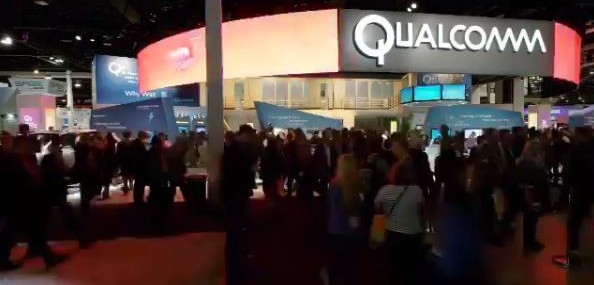Qualcomm goes big on wifi and IoT with multiple chip launches
By Tim Skinner telecoms.com
Qualcomm has announced new chips and technologies designed to boost domestic wifi coverage, at-home IoT connectivity, wearable tech capability and next generation broadband delivery.
Starting off with domestic wifi coverage boosting, and Qualcomm launched a new family of 802.11ac platforms designed to optimise device wifi usage by intelligently allocating radio spectrum in the home. It says its new three radio solutions combine two 5 GHz radios and a 2.4 GHz radio to help improve connectivity; and its platform, used on new routers and repeaters, can appropriately dedicate radio in the legacy 2.4 GHz band to devices only compatible with the 802.11n standard. This, in theory, can alleviate congestion on domestic networks and ensure more bandwidth availability for devices compatible with the newer 802.11.ac band.
Qualcomm says the self-organising features integrated into the new platform means it will become much easier to register and configure new devices on the network; while automatically allocating capacity for devices based on real-time conditions.
“As people rely on their home network to support more devices accessing the internet and streaming media, Wi-Fi is being stretched to the limit,” said Gopi Sirineni, vice president of product management, Qualcomm Atheros, Inc. “We are changing the game with features designed to deliver the best possible Wi-Fi experiences and now, uniquely, we are driving those technologies into more cost-effective products to extend the benefits to a wider swath of consumers.”
IoT is also in Qualcomm’s sights, as it unveiled a new chip set targeting low-power smart home devices. It says the QCA4012 chip brings dual band wifi, enhanced security, low power and small form factor for connected devices. Companion SDKs and services from partners Ayla, Exosite and Iota Labs include API interfaces and other tools to support IoT device and cloud integration.
“IOTA Labs has developed cutting edge IoT solutions integrating Qualcomm Technologies’ latest products with the IOTA Labs platform,” said Amit Singh, director and co-founder, IOTA Labs. “IOTA Labs’s leading edge IoT platform and experience acts as an accelerator for clients to transform their offerings into leading smarter products and services with a lower cost of ownership.”
The Snapdragon Wear 1100, included in the raft of announcements, joins the product line and targets consumer-led IoT products, including smart-accessories and wearable tech. Qualcomm says it has been designed to target the wearable segment where a smaller size, longer battery life, smarter sensing, enhanced security. It also comes with a modem capable of LTE, wifi and Bluetooth support.
“We are delighted to add Snapdragon Wear 1100 to our Snapdragon Wear family, thus making it easier for customers to develop connected wearables with targeted use cases such as kid and elderly tracking,” said Anthony Murray, SVP of IoT for Qualcomm Technologies. “We are actively working with the broader ecosystem to accelerate wearables innovation and are excited to announce a series of customer collaborations today.”
Finally, Qualcomm also announced a fixed networking launch which it claims will help operators deliver up to 1 Gbps data rates on existing infrastructure up to 100 meters. The GigaDSL chipsets are intended to support gigabit data rates on existing telephone lines providing a high-speed extension for VDSL without losing spectrum capacity. It says existing infrastructure can be upgraded to the new processors without having to rip up the network and start again. The product line will become available from June for both fibre to the building and customer premises equipment.
“With these new GigaDSL product offerings, we are able to meet carriers’ broadband goals, complementing fiber deployment in time for major events, such as the 2018 Winter Games in Korea and the 2020 Summer Games in Japan,” said Irvind Ghai, VP of product management at Qualcomm Atheros.
Read more »






/cdn0.vox-cdn.com/uploads/chorus_asset/file/6562791/Screen_Shot_2016-05-29_at_23.19.00.0.png)



